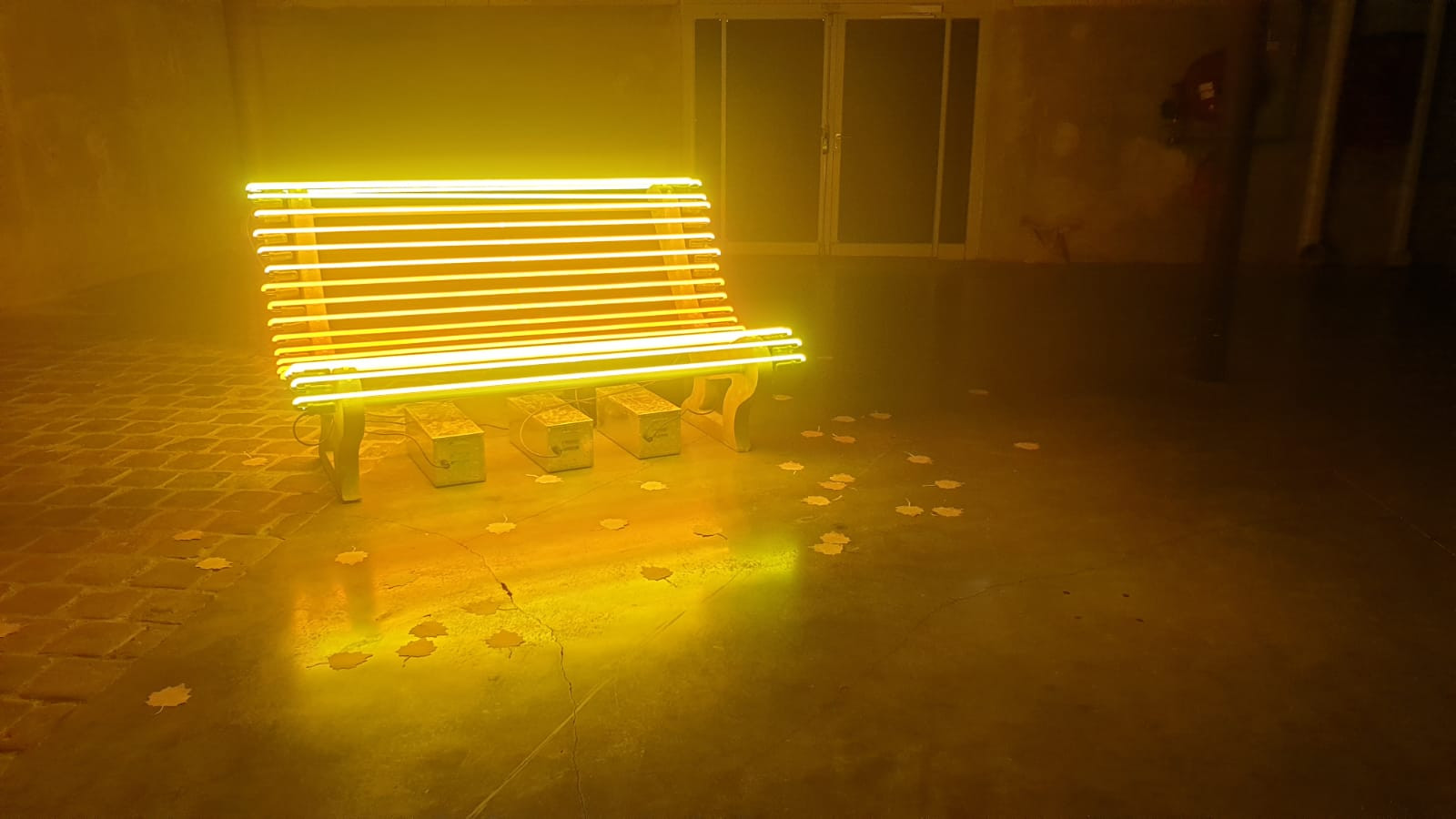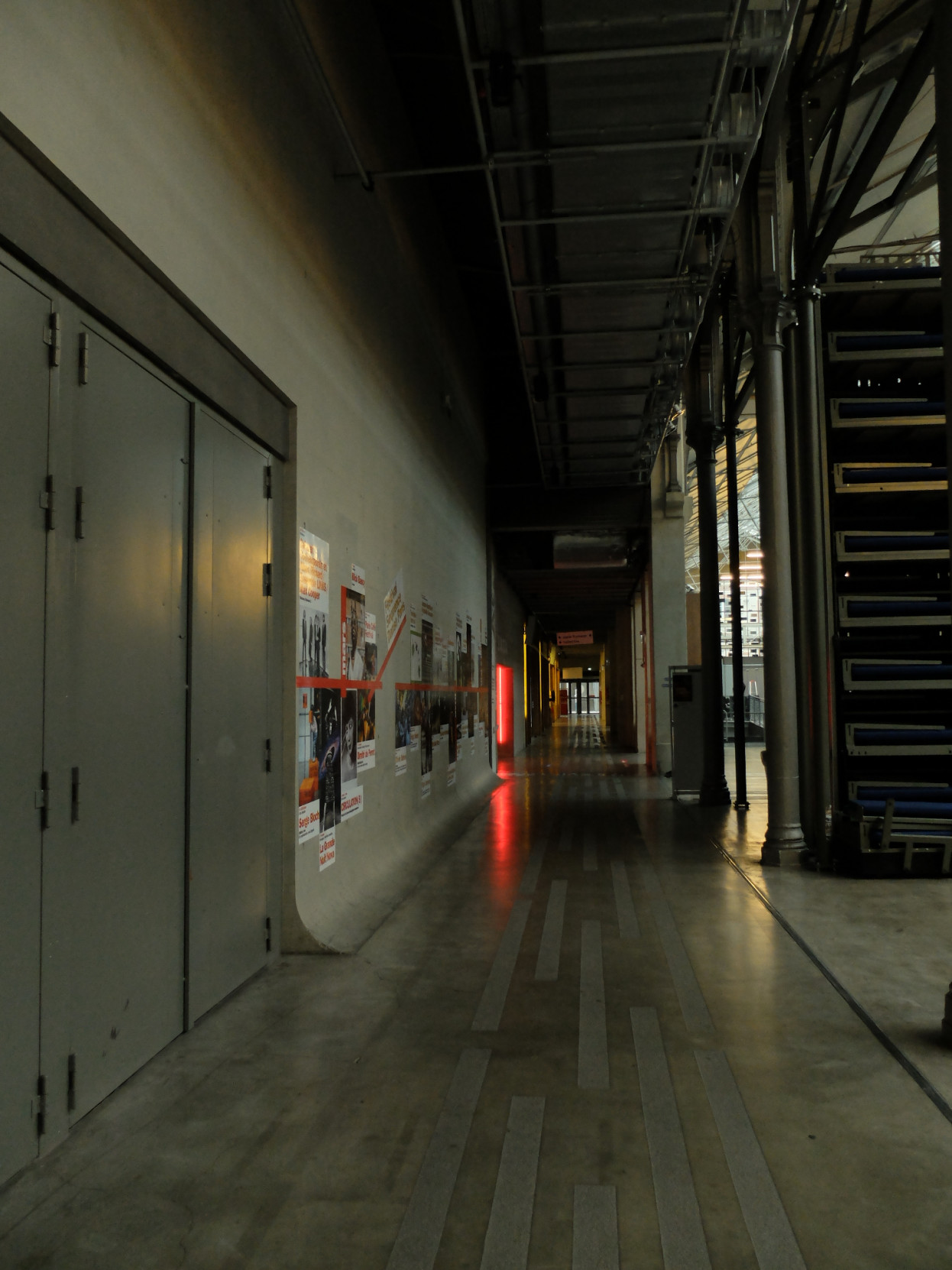Marialya Bestougeff (EDHEC Master 2000): "Art is a great means of mediation to help understand that which escapes us"
CENTQUATRE-PARIS, located at 104 Rue d’Aubervilliers in the 19th arrondissement of Paris, justifiably defines itself as an “infinite space of art, culture and innovation”. This 40,000 m² premises used to serve a logistical role for the capital’s funeral services, used by all the different professions that play a role in the final journey of the city’s residents. Nowadays, the transdisciplinarity of ideas is the key to its success. We caught up with its Director of innovation, Marialya Bestougeff, who has successfully combined two of the passions that have featured throughout her career – entrepreneurship and culture – in a role that involves promoting the start-ups of the “home-grown” incubator 104factory. Although the world of culture is unable to welcome audiences in this month of January, temporary exhibitions focusing on a single artist, Iván Navarro and Alain Fleischer, are being run for professionals. We hear the babble of birds from one exhibit and a few moments later cross paths with a small robot who reminds us to socially distance, as Marialya tells us the story of this site and those who inhabit it.
What is meant by “infinite space of art, culture and innovation”?
We describe it as an infinite space because we never limit ourselves. There are no limits to art, culture or innovation. All of our spaces can adapt, everything is reversible, so we can host all forms of art, a wide range of activities and projects. At the centre of the building you will always find artistic content that comes in many forms: monumental pieces, participatory performances, shows and more.
Via Le Cinq, local residents are free to come and practice their art, and rehearsal rooms are made available to artistic associations at a rate of €2 per hour. We also run a 50-hr support programme on urban cultures, and we have been involved in many initiatives with local stakeholders. Innovation is an integral part of the way we define this place and the programmes we run. We put projects on display that combine many disciplines (circus arts, music, visual arts) and we organise events open to the general public. This proximity between top-level artists and people eager to learn, people who come here out of passion, is highly stimulating. It generates unique encounters with people willing to share their passion for creativity. Art is a great means of mediation to help understand that which escapes us!
In normal times, the site is always open to spontaneous events: people are free to come and practice their art individually or collectively in dedicated spaces.
How is CENTQUATRE-PARIS managing to pursue its activities even though it is closed to the general public?
There are staff teams all over the building, those from CENTQUATRE-PARIS, artists working of course, but also innovative businesses like Diversion cinema, a firm that distributes and screens immersive reality experiences with which we are working on certain projects. Together we have just launched “VR TO GO”, a click & collect rental system for virtual reality headsets with immersive content. They allow you to travel to Everest or the moon or plunge you into a live show! At the incubator, we carry out a lot of tests to see if there is an appetite for a particular innovative service or product. And this was the ideal opportunity for a cultural site to reach out to the public despite the prevailing climate. In January we also maintained the Impatience festival for professionals, which reveals emerging young theatre companies, and we are also continuing to run professional presentations.
Beyond your proximity to the 104factory incubator, how do you contribute to “innovation” as such?
I’m Director of innovation and I will soon take over as joint Director of cultural engineering. That relates to our activities outside the premises, i.e. offering advice and support to other sites in France and abroad, for example the restoration of old industrial buildings due to become cultural locations or organising events in public spaces. Société du Grand Paris is currently our biggest client, with 68 new stations currently being built as part of the new Grand Paris Express network. We are part of a creative group that runs cultural and artistic events, with many projects run in tandem, involving collaboration between an artist and an architect for each station. There’s an idea for an artwork at the origin of the building which will then be superimposed on the station’s functional dimension. We also organise shared events and building sites, nomadic art and celebrations of artistic and technical prowess at key moments in a building project: fireworks above a tunnel boring machine or a leg of lamb cooked in asphalt for 6000 people as a social gathering for everyone who has worked on the site, as well as local stakeholders and residents. Our other ongoing projects include an old artillery manufacturing plant in Seville which will soon be housing a cultural site and an incubator for the cultural and creative industries, as well as reflections on urban and cultural events to be held in the former Eclair laboratories in Épinay-sur-Seine, to initiate the shift of this iconic location for 20th-century cinematography.
Why the objective to develop cultural engineering activities?
In cities and places generally, it is essential to develop spaces in a way that situates artistic content at their heart. These cultural engineering and culture-focused urban planning activities are also essential for us because subsidies are not enough to keep all of our activities running, even though we have the status of a public cultural cooperation establishment that depends on the city of Paris.
In strategic terms, my priority is to continue to develop programmes internationally. For example, we have developed key partnerships with Québec: a 100,000 m² incubator recently opened to support the cultural and creative industries (Zú) and there is another site dedicated to immersive reality (Centre PHI).
How do you select businesses for the 104factory incubator?
We regularly issue calls for projects. When selecting teams, there are several criteria. Each team must have at least 2 co-founders; their activity must relate to the cultural and creative industries; the business must have a prototype that can be tested at CENTQUATRE-PARIS; and the team must be able to integrate into the highly dynamic environment that is this infinite space. We always endeavour to avoid having projects in competition so as to encourage exchanges and the pooling of experiences and know-how. We don’t have a stake in any of the incubated start-ups; our only concern is to select interesting projects that will benefit our users and audiences. Most of the projects incubated here have gone on to form lasting enterprises, and that’s a great source of pride.
What’s particular about the 104factory incubator?
What makes it different is that it is located at the heart of a cultural site. That allows us to mobilise internal skills (communication, technical skills and live productions). We ask experts who are in a position to make useful contributions to development during their incubation. We organise meetings with the artists who work here and display their work, as well as with many other external contributors. We can also make ourselves available just to listen, offering an outside perspective. There is often a divide between business, entrepreneurship and art. Even though these are not the same worlds, they have a lot in common: how to talk about your project, how to promote it, practicing and improving on an ongoing basis. At our incubator, we offer several different forms of support (coaching, workshops, master classes, discussions and joint development), but our start-ups also bring us enrichment and positive creative energy. The entrepreneurs incubated here are also given help putting together their funding applications; we have a partnership with Bpifrance, for example.
Artists have something to offer entrepreneurs, but does it work both ways?
Yes, there is a real synergy, because we also have artists with questions about low-tech processes for cutting-edge technologies. We are lucky enough to have businesses working on highly diverse subjects, like artificial intelligence, which is a huge source of ideas for the artists. And the coming together of these two worlds occurs naturally! One of our companies, which was developing a new musical instrument for electronic music, tested out a prototype on our resident artists, who were in a position to give very specific feedback, as well as being very interested in the object itself. For one of the exhibitions organised here, we developed an experiential podcast as a mediation tool with one of the businesses we incubated, Pablo App.
How is 104factory committed to the environmental and digital transition?
We will be launching a new programme, Culture Impact, in 2021 that was designed as an urban laboratory for the environmental transition in the service of culture. It aims to rethink innovations in the cultural sector with a focus on reducing their environmental footprint. The environmental transition is a key challenge in the world of culture. We are standing in a heritage building, which is very energy inefficient. We are gradually changing our equipment, thinking about ways to run activities that are more environmentally friendly. It is also possible to imagine a form of management that is not top-down but more collaborative. Many young businesses we support already have an organizational approach rooted in the objective of having a positive impact on the environment. CENTQUATRE-PARIS is also part of the Arviva association, which brings together show business stakeholders to address the question of the environmental transition.
Another challenge for the cultural world is digital technology. Culture is not equipped in the same way that a major firm is when it comes to digital tools, and can sometimes be reluctant to adopt new habits. We have nearly all managed to start working from home, something that would have been unthinkable before the crisis!
Is entrepreneurship in the cultural and creative industry something new or has it already taken off?
It’s in development. The cultural and creative industry employs more people than the automotive industry, and is becoming more structured. Assemblies have been held, a veritable sector is forming. There is an increasing number of stakeholders offering support for cultural entrepreneurship, and major institutions are taking an interest. For example, the Grand Palais is setting up an offshoot with immersive experiences combining art and science as part of the 2024 Olympic Games in Paris! So there is a real growing awareness that it’s an attractive sector with many possibilities. Businesses in this sector don’t really identify with the “start-up nation”, but instead have values that more closely reflect the social & solidarity economy.
Would you say art and culture are indissociable from innovation?
I think by nature and in essence, art and culture have always reinvented themselves. Innovation is a term that is bandied about a lot, and in some so-called “innovative” circles no-one is truly innovating. In the projects that we support, I tend to ask what makes them unique. People always need reassurance that they’re doing something new, even though it might look a lot like something that exists already. Innovating is about taking risks, creating an experience of something that doesn’t exist yet. In art, there’s always an innovative dimension, something that surprises us. And there are magical ideas too: artists have the capacity to create, invent, make us feel emotions or even see that which is invisible.
Is CENTQUATRE-PARIS driven by the motivation to demonstrate that art and entrepreneurship are for everyone?
In many places like museums, the building is so impressive that people don’t dare go in. When the current director José-Manuel Gonçalvès first arrived, he completely changed the location’s dynamic, and the main entrance is now on Rue Curial, where you’ll find the nearest public transport and the heart of the neighbourhood’s activities. The piece by Pascale Marthine Tayou (Open Wall), which lights up as soon as the site opens, is a strong signal to visitors that they are entering a space that is open and accessible to all. Artistic openness is important, and we are also intent on promoting entrepreneurship to the general public with dedicated events like the Open Factory, which showcases our entrepreneurs’ projects.
More info about the 104factory incubator
More info about CENTQUATRE-PARIS

Image gallery5
Comments0
Please log in to see or add a comment
Suggested Articles









